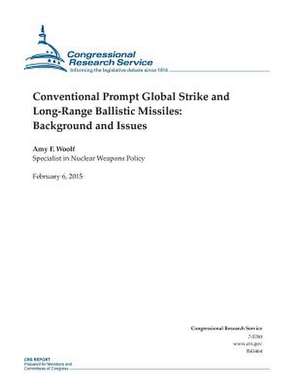Conventional Prompt Global Strike and Long-Range Ballistic Missiles
Autor Congressional Research Serviceen Limba Engleză Paperback
Preț: 124.48 lei
Nou
Puncte Express: 187
Preț estimativ în valută:
23.83€ • 24.55$ • 20.11£
23.83€ • 24.55$ • 20.11£
Carte disponibilă
Livrare economică 10-24 februarie
Preluare comenzi: 021 569.72.76
Specificații
ISBN-13: 9781508432326
ISBN-10: 1508432325
Pagini: 48
Dimensiuni: 216 x 279 x 3 mm
Greutate: 0.14 kg
Editura: CREATESPACE
ISBN-10: 1508432325
Pagini: 48
Dimensiuni: 216 x 279 x 3 mm
Greutate: 0.14 kg
Editura: CREATESPACE
